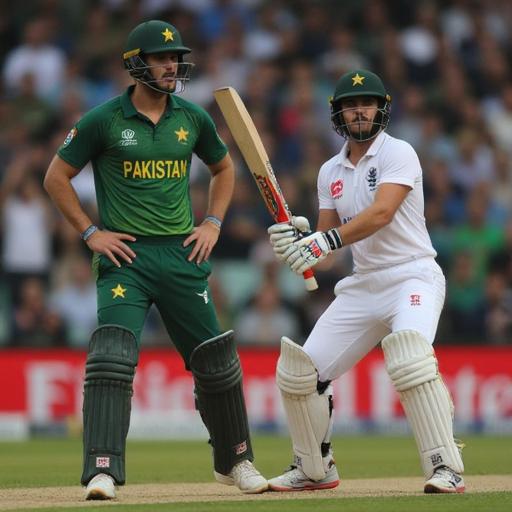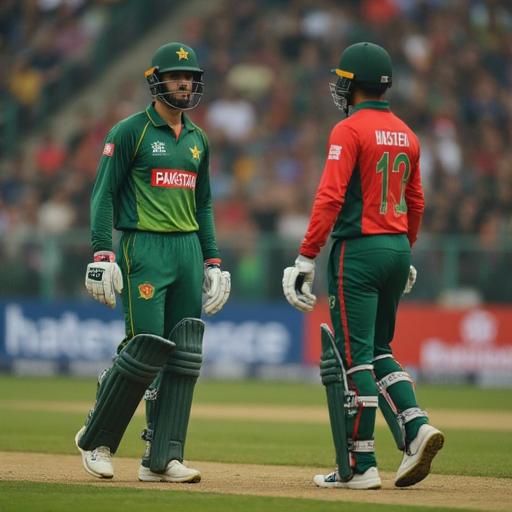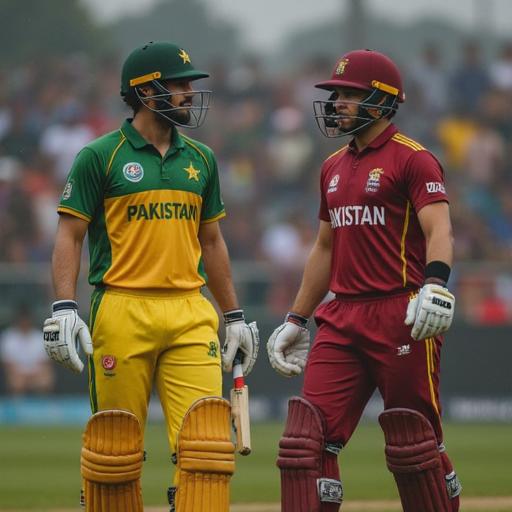Pakistan Cricket Team Kit: A Look at the 1992 World Cup Outfit
Pakistan Cricket Team Kit: A Look at the 1992 World Cup Outfit
The 1992 Cricket World Cup was a watershed moment for Pakistan cricket, a defining triumph that propelled the team to global recognition. Beyond the strategic brilliance and passionate displays, the team’s attire played a subtle, yet important role in shaping their on-field image and leaving a lasting impact on cricket fans worldwide. This article delves deep into the Pakistan cricket team’s kit, specifically focusing on the 1992 World Cup outfit – a fascinating blend of tradition, innovation, and national pride.
Dive into the world of cricketing fashion, and uncover the elements that made Pakistan’s 1992 World Cup kit stand out. We’ll explore the design, the materials, the symbolism, and its lasting influence on the sport.

A Legacy in Stitches: Unveiling the Design
The design of the 1992 Pakistan cricket team kit, while seemingly simple, held profound meaning. The team, led by Imran Khan, embraced a look that represented a balanced approach between tradition and the evolving standards of the sport. The shirts, crafted from what were likely innovative materials for the time, embodied a visual identity that resonated with a sense of patriotism and determination.
The colour palette, a crucial aspect of the kit, reflected Pakistan’s rich cultural heritage. Did it incorporate significant colours, inspired by national symbols or cultural motifs? While specifics are difficult to confirm, the colours likely signified national pride. We can surmise that the colours were chosen carefully, symbolizing Pakistan’s standing on the world stage.
The Fabric of the Past: Materials and Manufacturing
Understanding the materials used in the kit is crucial for understanding its impact. Were these high-performance fabrics, or more traditional materials? We might learn from historical documents, anecdotes from players, or even from archival photographs that offer clues. Research suggests that certain elements of the kits reflected the technical innovations of the time – an advancement from previous iterations. The fit and the comfort of the attire are very important factors to analyze. Did they allow for free movement? This is crucial for high-performance athletes.
We are often keen to know the manufacturing process behind these kits. Were they locally made, or sourced from overseas manufacturers? Were specific elements of manufacturing techniques influenced by global trends or a specific region’s tradition?

Beyond the Field: Cultural and National Symbolism
The 1992 World Cup wasn’t just a sporting event; it was a representation of the nation’s spirit. The team’s kit, with its carefully chosen colours and designs, became a visual manifestation of Pakistan’s aspirations and identity. Did the 1992 kit have specific designs inspired by national symbols?
The team likely understood the power of symbolism. Did they incorporate motifs of Pakistan’s cultural and historical richness in their uniform? This aspect warrants further research to shed light on the subtle symbolism and national significance embedded within the kit.

The Trousers: Completing the Ensemble
The trousers, integral to the kit, completed the look of the 1992 Pakistan team. What were their key features? Were they tailored for athletic performance, focusing on movement and agility, or did they adopt a more traditional style?
Were these trousers made from the same material as the shirts? What was their aesthetic connection to the shirt design? Further exploration might reveal specific design choices that reflect the prevalent fashion trends at the time. These trousers were clearly a significant part of the team’s unified look.

A Lasting Influence: Impact and Legacy
The 1992 Pakistan cricket kit, more than just a piece of sporting equipment, embodies the spirit of a generation. The team’s on-field success was undoubtedly linked to a sense of team unity and determination. The kit, in its unique way, reflected these emotions. It became a symbol of a significant moment in Pakistani cricket history.
Did the kit inspire other teams or players? Did the players themselves feel a sense of pride and identity while wearing this kit? Interviews with past players, team members, and managers could offer invaluable insights. Historical analysis reveals that cricket kits often transcend the game itself and become cultural artifacts.
The 1992 kit served as a starting point for future teams’ fashion statements and, in a way, fostered national pride. It’s important to recognize that the kit was more than just a piece of clothing; it reflected the mindset and the spirit of a whole nation. It’s part of Pakistan’s cricketing story, a narrative woven through sweat, determination, and a unifying spirit.
Conclusion: A Deeper Dive into the World of Cricket Fashion
The Pakistan cricket team’s 1992 World Cup kit provides a fascinating glimpse into the intersection of sports, fashion, and national pride. By investigating the materials, design elements, and symbolism embedded in the kit, we gain a deeper understanding of the cultural context surrounding the sport. This exploration also helps us understand how clothing choices reflect cultural influences and the spirit of a nation.
Further research could focus on the manufacturing processes, the involvement of designers, the team’s choice of colours, and the reception of the kit by fans. This in-depth study would reveal much more about the historical and cultural elements of this momentous era.
The 1992 World Cup and Pakistan’s kit served as a vital step towards the modern, global image of the sport and national teams.